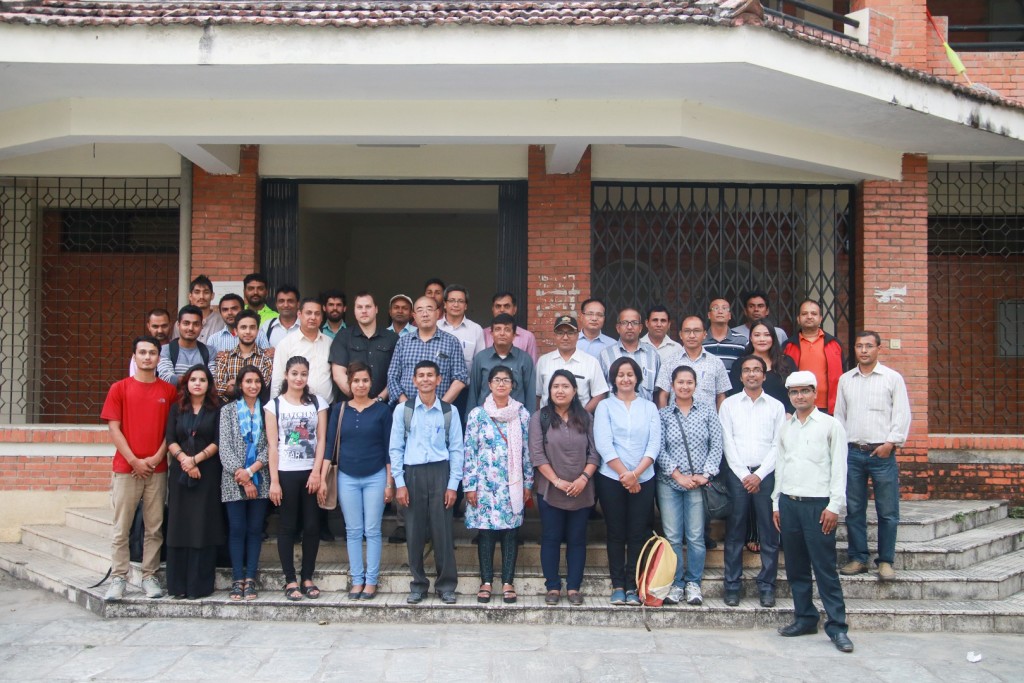The talk program was held at the Central Department of Hydrology and Meteorology at Tribhuvan University on 16th October 2017. It was jointly organized by the Central Department of Hydrology and Meteorology/ Tribhuwan University, Department of Meteorology/ Tri-Chandra Multiple Campus/Tribhuvan University, and The Small Earth Nepal.
The two guest speakers were Dr. Chris DeBeer https://gwf.usask.ca/profiles/people/chris-debeer.php, the network and science manager of Changing Cold Regions Network (CCRN) and Global Water Future (GWF) from Saskatchewan University, Canada and Professor Toru Tarou from the Faculty of Education, Kagawa University in Japan.
Dr. DeBeer talked about the changing environment in western Canada due to climate change over the years. He also presented a series of changes seen in the western part of the country some of which are floods, wildfires, and droughts. He also talked about warming trends and other climatic changes which are causing rapid and dramatic shifts in the landscape, vegetation, and water cycling, presenting a significant challenge for land and water management. Among these climatic events wildfires that occurred in 2016, he verified was the most expensive climatic event in the history of Canada costing billions of dollars.
Dr. DeBeer also introduced important research initiatives in Canada; the Changing Cold Regions Network (CCRN), Global Water Futures (GWF), and the International Network for Alpine Research Catchment Hydrology (INARCH). They mainly depend on field research and direct observations of changing climate, watersheds, landscapes, etc. His talk also sheds light on the importance of using newer technologies, applying result-based actions, using global models and downscaling methods to observe, understand, and predict climate change in cold and mountainous regions.
Professor Tarou introduced some aspects of Asian Monsoon and presented his team’s ongoing research activities in Northeast India. They conducted TRMM/PR using 36 rain gauges in Meghalaya state because Meghalaya is the state with the highest rainfall in the country. They analyzed the data from 2004 to 2013 and obtained 28,207 TRMM/PR-rain gauge matchups with 2,170 TRMM/PR rainy fields of view. A time lag of around 300 seconds between the estimates from the TRMM/PR NSR and rain gauges were found. Significant and large underestimations of TRMM/PR NSR were detected during the monsoon season (June–September) over the large areas of Meghalaya, Sylhet, and Barak. In the Meghalaya sub-region, a major contribution to underestimation came from moderate TRMM/PR NSR from stratiform systems, and missed detection error was a secondary contributor. In the Sylhet-Barak sub-region, moderate TRMM/PR NSR from convective systems largely contributed. Underestimation was not detected in the pre-monsoon season (March-May).
He concluded that rain intensity in Meghalaya is increasing as the ground atmosphere in the lower troposphere for Meghalaya during monsoon. Professor Tarou also talked about the Diskometer Observation project which has been recently installed in the Meghalaya Plateau and he is hopeful that there will be significant findings from these installations.




